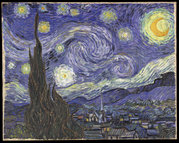Researchers exploring the role of genetics in bipolar disorder are launching an exciting new study and asking for your help. Over the years, hundreds of Post readers and their families have generously participated in bipolar disorder surveys and, in the process, made significant contributions to scientific understanding of the genes at work in the disorder.
The Institute of Psychiatric Research at Indiana University School of Medicine is now enrolling participants in an investigation that further explores the role of genetic and environmental factors in bipolar disorder.
Under the guidance of one of the country's leading experts on the subject, Dr. John I. Nurnberger, the new study seeks participants with bipolar I disorder--that is, those persons who have experienced both manic and major depressive episodes.
In earlier surveys, Dr. Nurnberger and colleagues looked for families with multiple cases of bipolar illness to gain better insight into the genetic link to the disorder. The research provided clues as to which chromosomes--the threadlike structures that carry genetic information in the form of genes--may play a role in bipolar disorder. Scientific teams are now focusing attention on identifying specific genes at work in the disorder.
"Before, we looked for families with multiple cases of bipolar illness to do what is called genetic linkage analysis, which shows us which and what part of chromosomes are important," Dr. Nurnberger explained to the Post. "The next step is to go into the portions of chromosomes to pick out the individual genes that are operating. To do that, we need a different type of sample. For this form of investigation, scientists use what is referred to as a large case-control sample, where DNA is obtained from as many unrelated people with bipolar illness as possible. Our goal is 5,000 people."
"We will conduct a confidential diagnostic interview on everyone who participates," Dr. Nurnberger explains. "Participation involves an interview that will take approximately four hours, as well as a donation of a blood sample."
Biological parents may be given the opportunity to donate a blood sample if they wish to participate as well. For participants who live far away from Indiana University School of Medicine, the interview can be done by telephone and the blood sample drawn by a local physician, who will then forward the sample to the laboratory.
By participating, you or family members will aid investigators in identifying and isolating specific genes involved, which will help pave the way toward better therapies.
"We think this research study is terribly important for people with bipolar illness," stresses Dr. Nurnberger. "It represents a way to the future with a better understanding of where the condition comes from, what may be causing it in different groups of people, and new avenues to treatment."
Indiana University is the coordinating site for the study, which is a national collaboration funded by the National Institutes of Mental Health. If you are interesting in learning more about the study or becoming a participant, you can find more information about the study on the Web site at http://www. iupui.edu/-bipolar/research.html or by calling 888-750-2201.
Symptoms of Severe Mania
* Constant talkativeness and movement
* Inability to concentrate
* Illogical speech
* Delusions of grandeur
* Loss of judgment
* Spending money beyond financial capability
* Extreme hostility
* Arrogance
* Demanding behavior
* Making abusive or obscene statements
* Shouting and throwing things
* Paranoid thoughts
* Seductive sexual behavior
Symptoms of Depression
* Sadness
* Guilt
* Hostility
* Remorse
* Anger
* Crying
* Mood swings
* Poor self-image
* Indecisiveness
* Eating disorders
* Weight loss or gain
* Sleeping problems
* Loss of sexual interest
* Feelings of hopelessness, helplessness, and worthlessness
* Withdrawal from life
* Agitated or slowed movements
* Fatigue or weakness
COPYRIGHT 2005 Saturday Evening Post Society
COPYRIGHT 2005 Gale Group



